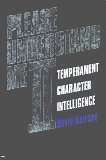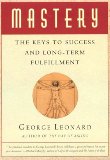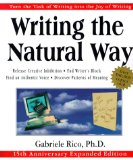I’m leaving out many books that I’ve loved, like Rollo May’s The Courage to Create and Steven Pressfield’s The War of Art
, but there are so many good books that just listing those two brings to mind more that I feel compelled to include, like Julia Cameron’s books which have helped my students and friends but I don’t know them well enough to review. For now, here’s my short-list of “Self-Help” books for artists.
Books
Please Understand Me II: Temperament, Character, Intelligence
by David Keirsey
Forgive the title. A friend of mine felt embarrassed to buy it at the store because of that title. But it’s a worthwhile book. David Keirsey carried on the tradition of Carl Jung and Myers-Briggs with their categories of temperament, and brought it to a level that is easy to understand and responsible enough to recommend. I have lots of gripes about it that I address in my seminar (any system that categorizes humans so simply will break apart in the face of real humans) but corporations use this system to place employees because it works, especially with extremes. I spent about three years absorbing it, then “abandoned” it, but it still helps me daily in understanding the conflicts and harmonies of relationships, including artists’ relationships with their work. In my seminar, I explain the system, show it’s value, then move on to how we can better understand personality with a many-thousand-years-old approach that is more instinctive and natural. —mv
Click to buy from Amazon.com
Mastery: The Keys to Success and Long-Term Fullfillment
by George Leonard
(Note that this is not the more-famous book by another author – this is the George Leonard book)
In 1998, a student told me that I taught the same things George Leonard taught. I had never heard of George Leonard, but in the week following, I read Mastery twice through. It felt good to know that someone further along the path was teaching the same things, and with such a generous, loving attitude. He explains how the path to mastery is not a straight line — it has “plateaus”, and there are three “enemies” that can prevent us from moving on. He shows how our skills grow naturally, as our bodies grow naturally, when we simply keep working and learn to enjoy the process. Easy to read, and very encouraging. —mv
Click to buy from Amazon.com
Zen in the Art of Writing
by Ray Bradbury
Not every essay in here is great, but chapters 1, 3, 8, & 9 are corkers! Ray Bradbury wrote essays to make your blood rush with hope and enthusiasm to do your best work. His advice is so simple and sound — he points us back to the loves of childhood that made us want to live forever so we could draw or paint or make music or tell stories. Worth reading when your creativity could use some emotional nutrition, or at least some emotional caffeine. —mv
Click to buy from Amazon.com
Writing the Natural Way
by Gabriele Rico
This is an excellent book in every way. The best of its kind. I also listed it in the Composition book reviews because I took more from her in teaching pictorial composition than from anyone. But it is technically a writing book, focused on poems. Sorry to put it that way. It’s much more than a writing book. It is a course in creativity. She takes the old wisdom that creative people have used for thousands of years and not only represents it so that it feels new, she presents a method called “clustering” that is the most useful tool for arranging ideas that I’ve ever encountered, and has helped me as much as any technique I know. Gabriele Rico has fused theory and practice so well that I feel no obligation to write a book on creativity. This is the one I recommend. —mv
Click to buy from Amazon.com
Marshall is a participant in the Amazon Associates program and may earn a small commission on products purchased using these links. The product price is the same whether or not you use these links, but by using them, it helps offset the cost of running this website.



